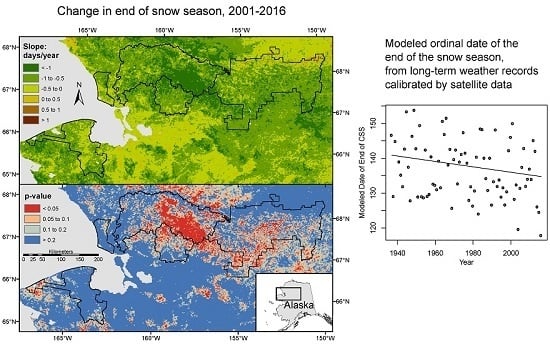Trends in Greenness and Snow Cover in Alaska’s Arctic National Parks, 2000–2016
Abstract
:1. Introduction
2. Materials and Methods
3. Results and Discussion
3.1. End of the Continuous Snow Season
3.2. Spring Green-Up
3.3. Maximum Greenness
3.4. Fall Senescence
3.5. Establishment of the Continuous Snow Cover
4. Conclusions
Supplementary Materials
Acknowledgments
Conflicts of Interest
References
- Overland, J.; Hanna, E.; Hanssen-Bauer, I.; Kim, S.-J.; Walsh, J.; Wang, M.; Bhatt, U.S. Air temperature. Bull. Am. Meteorol. Soc. 2015, 96, S128–S129. [Google Scholar]
- Derksen, C.; Brown, R. Spring snow cover extent reductions in the 2008–2012 period exceeding climate model projections. Geophys. Res. Lett. 2012, 39, L19504. [Google Scholar] [CrossRef]
- Jia, G.J.; Epstein, H.E.; Walker, D.A. Greening of arctic Alaska, 1981–2001. Geophys. Res. Lett. 2003, 30, 2067. [Google Scholar] [CrossRef]
- Verbyla, D. The greening and browning of Alaska based on 1982–2003 satellite data. Glob. Ecol. Biogeogr. 2008, 17, 547–555. [Google Scholar] [CrossRef]
- Bhatt, U.S.; Walker, D.A.; Raynolds, M.K.; Bieniek, P.A.; Epstein, H.E.; Comiso, J.C.; Pinzon, J.E.; Tucker, C.J.; Polyakov, I.V. Recent declines in warming and vegetation greening trends over pan-Arctic tundra. Remote Sens. 2013, 5, 4229–4254. [Google Scholar] [CrossRef]
- Bieniek, P.A.; Bhatt, U.S.; Walker, D.A.; Raynolds, M.K.; Comiso, J.C.; Epstein, H.E.; Pinzon, J.E.; Tucker, C.J.; Thoman, R.L.; Tran, H.; et al. Climate Drivers Linked to Changing Seasonality of Alaska Coastal Tundra Vegetation Productivity. Earth Interact. 2015, 19, 1–29. [Google Scholar] [CrossRef]
- Lawler, J.P.; Miller, S.D.; Sanzone, D.; Ver Hoef, J.; Young, S.B. Arctic Network Vital Signs Monitoring Plan; Natural Resource Report NPS/ARCN/NRR-2009/088; National Park Service: Fort Collins, CO, USA, 2009. Available online: https://irma.nps.gov/DataStore/Reference/Profile/661340 (accessed on 18 May 2017).
- Swanson, D.K. Satellite Greenness Data Summary for the Arctic Inventory and Monitoring Network, 1990–2009; Natural Resource Data Series NPS/ARCN/NRDS—2010/124; National Park Service: Fort Collins, CO, USA, 2010. Available online: https://irma.nps.gov/DataStore/Reference/Profile/2166935 (accessed on 18 May 2017).
- Swanson, D.K. Snow Cover Monitoring with MODIS Satellite Data in the Arctic Inventory and Monitoring Network, Alaska, 2000–2013; Natural Resource Data Series NPS/ARCN/NRDS—2014/634; National Park Service: Fort Collins, CO, USA, 2014. Available online: https://irma.nps.gov/App/Reference/Profile/2208992 (accessed on 18 May 2017).
- Swanson, D.K. Monitoring of Greenness and Snow Phenology by Remote Automated Cameras in the NPS Arctic Inventory and Monitoring Network, 2013-14; Natural Resource Data Series NPS/ARCN/NRDS—2015/798; National Park Service: Fort Collins, CO, USA, 2015. Available online: https://irma.nps.gov/DataStore/Reference/Profile/2222147 (accessed on 18 May 2017).
- MODIS Land Team MODIS Land. Available online: https://modis-land.gsfc.nasa.gov/ (accessed on 6 December 2016).
- PRISM Climate Group. Mean Monthly Temperature for Alaska 1971–2000, Annual Mean Average Temperature for Alaska 1971–2000. Oregon State University: Corvallis, OR, USA. Available online: http://prism.oregonstate.edu (accessed on 8 September 2014).
- Barrett, R.T.S.; Hollister, R.D.; Oberbauer, S.F.; Tweedie, C.E. Arctic plant responses to changing abiotic factors in northern Alaska. Am. J. Bot. 2015, 102, 2020–2031. [Google Scholar] [CrossRef] [PubMed]
- NOAA Regional Climate Centers Applied Climate Information System (ACIS). Available online: http://xmacis.rcc-acis.org/ (accessed on 21 October 2016).
- Jorgenson, M.T.; Roth, J.E.; Miller, P.F.; Macander, M.J.; Duffy, M.S.; Wells, A.F.; Frost, G.V.; Pullman, E.R. An Ecological Land Survey and Landcover Map of the Arctic Network; Natural Resource Technical Report ARCN/NRTR—2009/270; National Park Service: Fort Collins, CO, USA, 2009. Available online: https://irma.nps.gov/App/Reference/Profile/663934 (accessed on 18 May 2017).
- Hall, D.K.; Riggs, G.A.; Salomonson, V.V. Data Set Documentation: MODIS/Terra Snow Cover Daily L3 Global 500 m Grid, Version 5. Available online: http://nsidc.org/data/docs/daac/modis_v5/mod10a1_modis_terra_snow_daily_global_500m_grid.gd.html (accessed on 6 December 2016).
- Hall, D.K.; Salomonson, V.V.; Riggs, A. MODIS/Terra Snow Cover Daily L3 Global 500 m Grid, Version 5; Snow and Ice Data Center Distributed Active Archive Center: Boulder, Colorado, USA, 2006; Available online: http://dx.doi.org/10.5067/63NQASRDPDB0 (accessed on 11 February 2016).
- Riggs, G.A.; Hall, D.K.; Salomonson, V.V. MODIS Snow Products User Guide to Collection 5; Snow and Ice Data Center Distributed Active Archive Center: Boulder, Colorado, USA, 2006; Available online: http://nsidc.org/data/docs/daac/modis_v5/dorothy_snow_doc.pdf (accessed on 11 February 2016).
- Lindsay, C.; Zhu, J.; Miller, A.E.; Kirchner, P.; Wilson, T.L. Deriving Snow Cover Metrics for Alaska from MODIS. Remote Sens. 2015, 7, 12961–12985. [Google Scholar] [CrossRef]
- Zhu, J.; Lindsay, C. MODIS-Derived Snow Metrics Algorithm, Version 1.1; University of Alaska Fairbanks, Geographic Information Network for Alaska: Fairbanks, AK, USA, 2013; Available online: http://www.gina.alaska.edu/projects/modis-derived-ndvi-metrics (accessed on 16 May 2014).
- Geographic Information Network for Alaska. Projects—MODIS-Derived Snow Metrics—Geographic Information Network of Alaska. Available online: http://www.gina.alaska.edu/projects/modis-derived-snow-metrics (accessed on 1 December 2016).
- Jenkerson, C.; Maiersperger, T.; Schmidt, G. eMODIS: A User-Friendly Data Source; US Geological Survey: Reston, VA, USA, 2010. Available online: http://pubs.er.usgs.gov/usgspubs/ofr/ofr20101055 (accessed on 11 February 2016).
- Jenkerson, C.B.; Schmidt, G.L. eMODIS Alaska. In Proceedings of the American Society for Photogrammetry & Remote Sensing Annual Conference (ASPRS) 2009 Annual Conference, Baltimore, MD, USA, 9–13 March 2009; Available online: http://info.asprs.org/publications/proceedings/baltimore09/0043.pdf (accessed on 11 February 2016).
- U.S. Geological Survey. EarthExplorer. Available online: http://earthexplorer.usgs.gov/ (accessed on 6 December 2016).
- Swets, D.L.; Reed, B.C.; Rowland, J.D.; Marko, S.E. A weighted least-squares approach to temporal NDVI smoothing. In Proceedings of the 1999 ASPRS Annual Conference: From Image to Information, Portland, OR, USA, 17–21 May 1999; American Society for Photogrammetry and Remote Sensing: Bethesda, MD, USA, 1999; pp. 526–536. [Google Scholar]
- Reed, B.C.; Brown, J.F.; VanderZee, D.; Loveland, T.R.; Merchant, J.W.; Ohlen, D.O. Measuring phenological variability from satellite imagery. J. Veg. Sci. 1994, 5, 703–714. [Google Scholar] [CrossRef]
- Zhu, J.; Miller, A.E.; Lindsay, C.; Broderson, D.; Heinrichs, T.; Martyn, P. MODIS NDVI Products and Metrics User Manual, Version 1.0; Geographic Information Network for Alaska, University of Alaska: Fairbanks, AK, USA, 2013. [Google Scholar]
- Geographic Information Network of Alaska Projects—MODIS-Derived NDVI Metrics—Geographic Information Network of Alaska. Available online: http://www.gina.alaska.edu/projects/modis-derived-ndvi-metrics (accessed on 1 December 2016).
- Wang, D.; Morton, D.; Masek, J.; Wu, A.; Nagol, J.; Xiong, X.; Levy, R.; Vermote, E.; Wolfe, R. Impact of sensor degradation on the MODIS NDVI time series. Remote Sens. Environ. 2012, 119, 55–61. [Google Scholar] [CrossRef]
- R Core Team. R: A Language and Environment for Statistical Computing, Version 3.0.1; R Foundation for Statistical Computing: Vienna, Austria, 2014; Available online: http://www.R-project.org (accessed on 21 January 2014).
- Hijmans, R.J. Raster: Geographic Data Analysis and Modeling, R Package Version 2.3-40; R Foundation for Statistical Computing: Vienna, Austria, 2015; Available online: http://CRAN.R-project.org/package=raster (accessed on 4 January 2016).
- Bivand, R.; Keitt, T.; Rowlingson, B. Rgdal: Bindings for the Geospatial Data Abstraction Library, R Package Version 0.9-2; R Foundation for Statistical Computing: Vienna, Austria, 2015; Available online: http://CRAN.R-project.org/package=rgdal (accessed on 4 January 2016).
- Swanson, D.K. Landscape Patterns and Dynamics Monitoring Protocol for the Arctic Network: Narrative; Natural Resource Report NPS/ARCN/NRR—2017/1380; National Park Service: Fort Collins, CO, USA, 2017. Available online: https://irma.nps.gov/DataStore/Reference/Profile/2238342 (accessed on 18 May 2017).
- Swanson, D.K. Landscape Patterns and Dynamics Monitoring Protocol for the Arctic Network: Standard Operating Procedures; Natural Resource Report NPS/ARCN/NRR—2017/1381; National Park Service: Fort Collins, CO, USA, 2017. Available online: https://irma.nps.gov/DataStore/Reference/Profile/2238343 (accessed on 18 May 2017).
- Boggs, K.; Michaelson, J. Ecological Subsections of Gates of the Arctic National Park and Preserve; Inventory and Monitoring Program; National Park Service, Alaska Region: Anchorage, AK, USA, 2001. Available online: https://irma.nps.gov/App/Reference/DownloadDigitalFile?code=151098&file=GAAR_EcologicalSubs_final.pdf (accessed on 18 May 2017).
- Jorgenson, M.T. Ecological Subsections of Bering Land Bridge National Preserve; Inventory and Monitoring Program; National Park Service, Alaska Region: Anchorage, AK, USA, 2001. Available online: https://irma.nps.gov/App/Reference/DownloadDigitalFile?code=418816&file=BELA_EcologicalSubsections.pdf (accessed on 18 May 2017).
- Jorgenson, M.T.; Swanson, D.K.; Macander, M. Landscape-Level Mapping of Ecological Units for the Noatak National Preserve, Alaska; Inventory and Monitoring Program; National Park Service, Alaska Region: Anchorage, AK, USA, 2001. Available online: https://irma.nps.gov/App/Reference/DownloadDigitalFile?code=419154&file=NOAT_EcologicalSubsections.pdf (accessed on 18 May 2017).
- Swanson, D.K. Ecological Units of Cape Krusenstern National Monument, Alaska; Inventory and Monitoring Program; National Park Service, Alaska Region: Anchorage, AK, USA, 2001. Available online: https://irma.nps.gov/App/Reference/Profile/584437 (accessed on 18 May 2017).
- Swanson, D.K. Ecological Units of Kobuk Valley National Park, Alaska; Inventory and Monitoring Program; National Park Service, Alaska Region: Anchorage, AK, USA, 2001. Available online: https://irma.nps.gov/App/Reference/Profile/584437 (accessed on 18 May 2017).
- Molau, U.; Nordenhall, U.; Eriksen, B. Onset of flowering and climate variability in an alpine landscape: A 10-year study from Swedish Lapland. Am. J. Bot. 2005, 92, 422–431. [Google Scholar] [CrossRef] [PubMed]
- Richardson, A.D.; Jenkins, J.P.; Braswell, B.H.; Hollinger, D.Y.; Ollinger, S.V.; Smith, M.-L. Use of digital webcam images to track spring green-up in a deciduous broadleaf forest. Oecologia 2007, 152, 323–334. [Google Scholar] [CrossRef] [PubMed]
- Sonnentag, O.; Hufkens, K.; Teshera-Sterne, C.; Young, A.M.; Friedl, M.; Braswell, B.H.; Milliman, T.; O’Keefe, J.; Richardson, A.D. Digital repeat photography for phenological research in forest ecosystems. Agric. For. Meteorol. 2012, 152, 159–177. [Google Scholar] [CrossRef]
- Helsel, D.R.; Hirsch, R.M. Trend analysis. In Statistical Methods in Water Resources Techniques of Water Resources Investigations, Book 4, Chapter A3; U.S. Geological Survey: Reston, VA, USA, 2002; pp. 323–356. [Google Scholar]
- Sen, P.K. Estimates of the regression coefficient based on Kendall’s tau. J. Am. Stat. Assoc. 1968, 63, 1379–1389. [Google Scholar] [CrossRef]
- Marchetto, A. Rkt: Mann-Kendall Test, Seasonal and Regional Kendall Tests; R Package Version 1.4; R Foundation for Statistical Computing: Vienna, Austria, 2015; Available online: http://CRAN.R-project.org/package=rkt (accessed on 5 November 2015).
- Alaska Interagency Coordination Center. Fire History in Alaska. Available online: http://afsmaps.blm.gov/imf_firehistory/imf.jsp?site=firehistory (accessed on 28 June 2016).
- Koenker, R.; Bassett, G., Jr. Regression quantiles. Econometrica 1978, 46, 33–50. [Google Scholar] [CrossRef]
- Koenker, R. Package “Quantreg” Version 5.26; R Foundation for Statistical Computing: Vienna, Austria, 2016; Available online: https://cran.r-project.org/web/packages/quantreg/quantreg.pdf (accessed on 28 June 2016).
- Swanson, D.K. Surface Water Area Change in the Arctic Network of National Parks, Alaska, 1985–2011: Analysis of Landsat Data; Natural Resource Data Series NPS/ARCN/NRDS—2013/445; National Park Service: Fort Collins, CO, USA, 2013. Available online: https://irma.nps.gov/App/Reference/Profile/2193078 (accessed on 18 May 2017).
- Biebl, R. Influence of short-days on arctic plants during the arctic long-days. Planta 1967, 75, 77–84. [Google Scholar] [CrossRef] [PubMed]
- Oberbauer, S.F.; Elmendorf, S.C.; Troxler, T.G.; Hollister, R.D.; Rocha, A.V.; Bret-Harte, M.S.; Dawes, M.A.; Fosaa, A.M.; Henry, G.H.R.; Høye, T.T.; et al. Phenological response of tundra plants to background climate variation tested using the International Tundra Experiment. Philos. Trans. R. Soc. Lond. B Biol. Sci. 2013, 368, 13–20. [Google Scholar] [CrossRef] [PubMed]
- Marchand, F.L.; Verlinden, M.; Kockelbergh, F.; Graae, B.J.; Beyens, L.; Nijs, I. Disentangling effects of an experimentally imposed extreme temperature event and naturally associated desiccation on Arctic tundra. Funct. Ecol. 2006, 20, 917–928. [Google Scholar] [CrossRef]
- Sturm, M.; Holmgren, J.; Liston, G.E. A Seasonal Snow Cover Classification System for Local to Global Applications. J. Clim. 1995, 8, 1261–1283. [Google Scholar] [CrossRef]
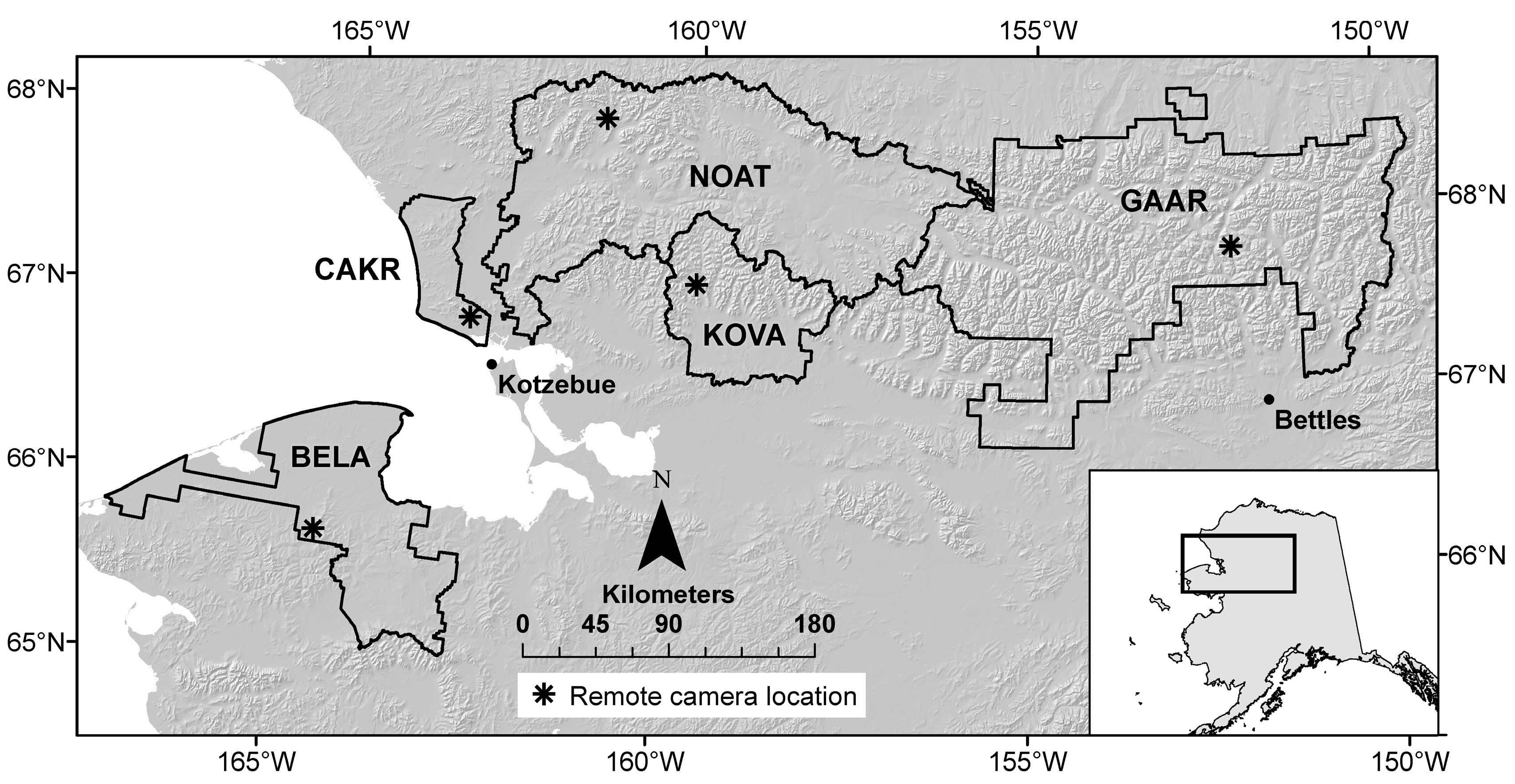
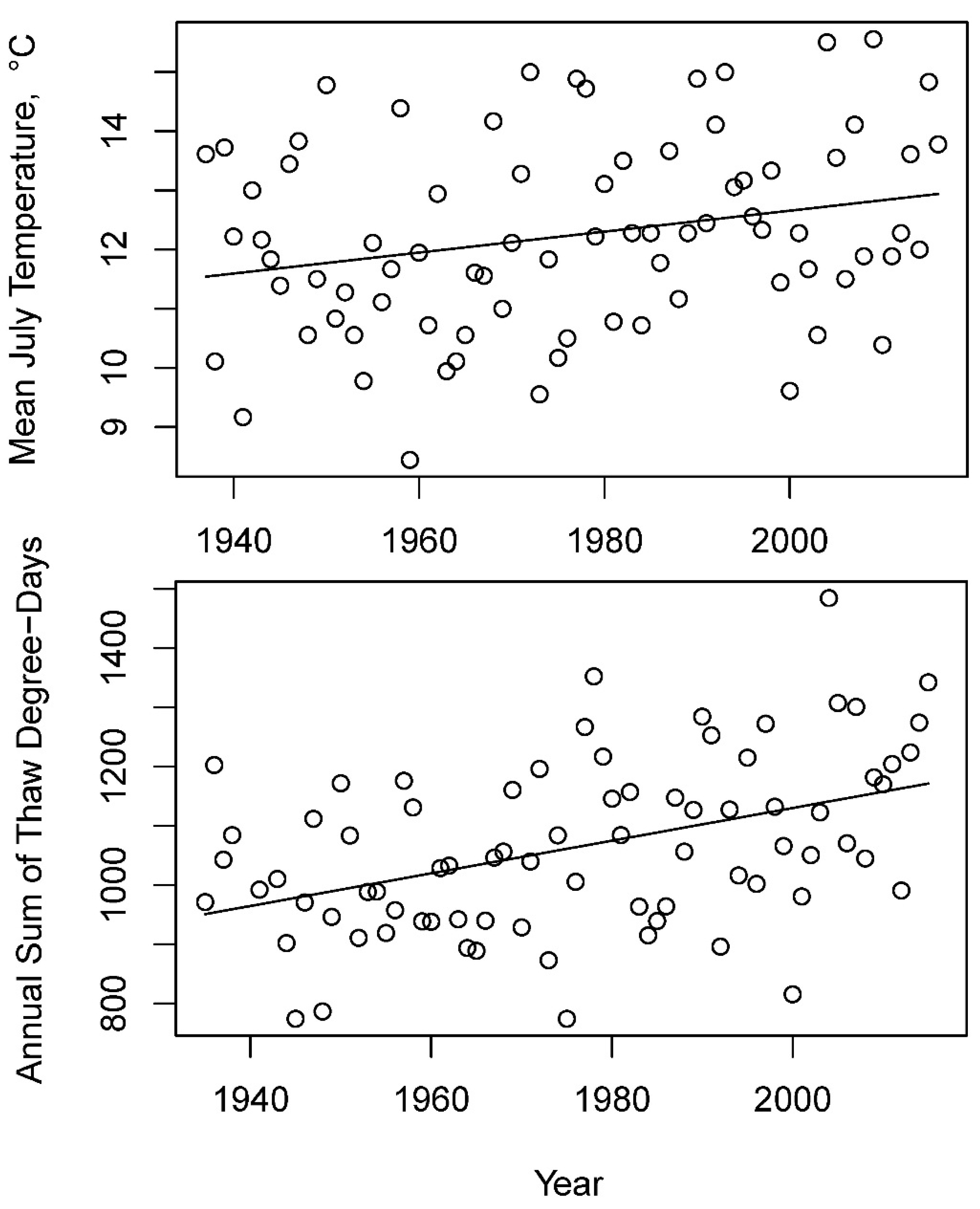
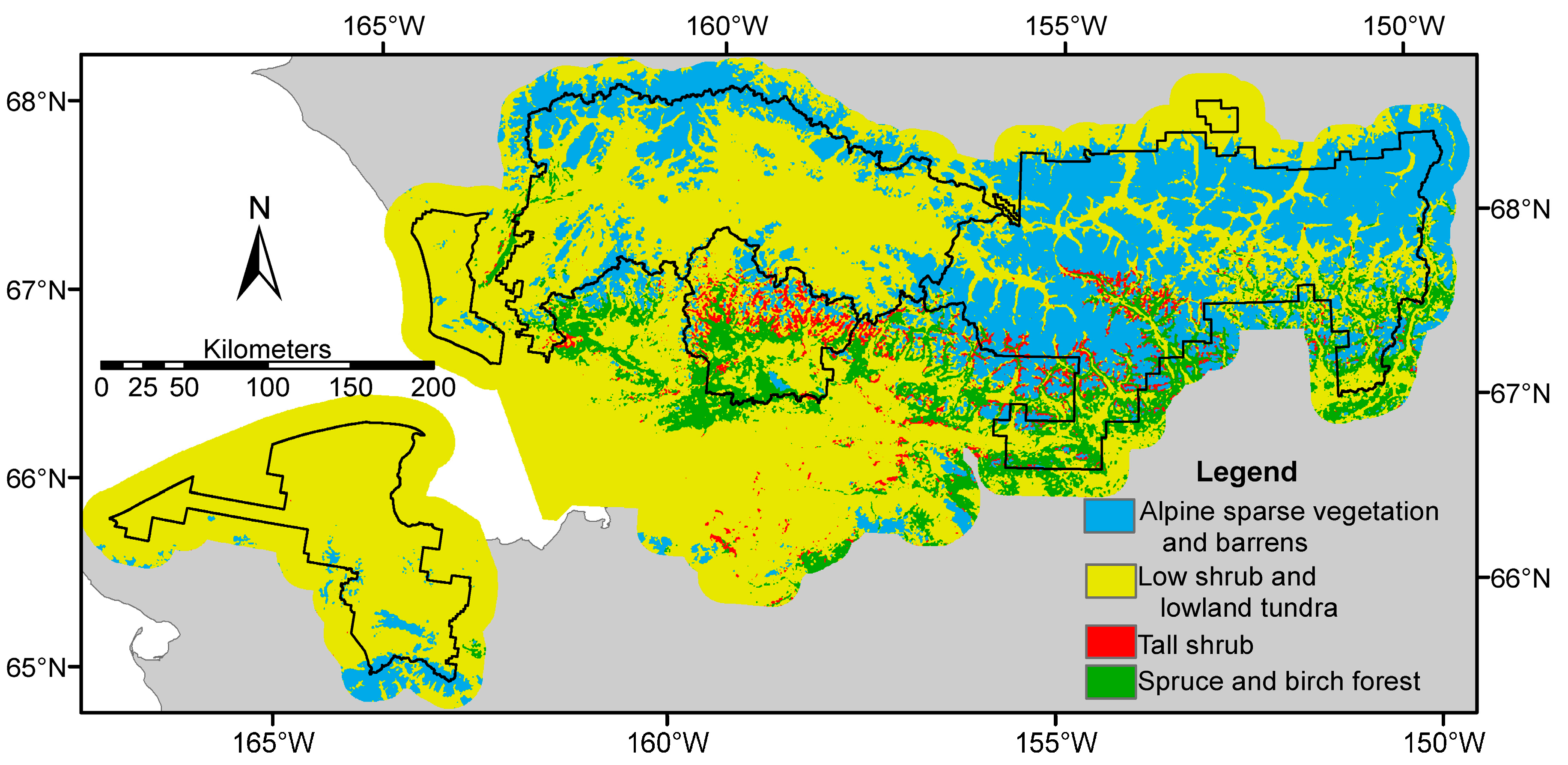
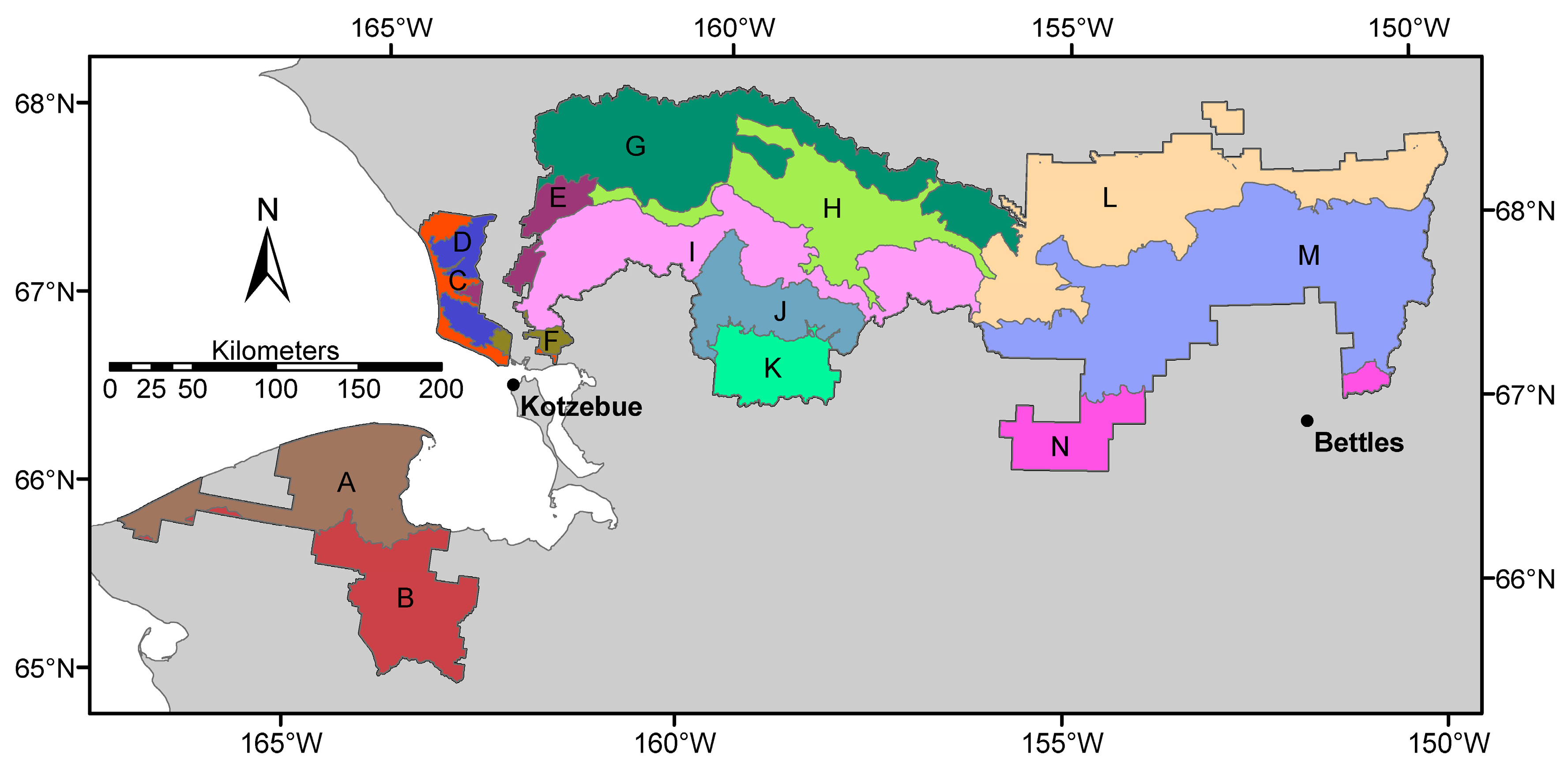


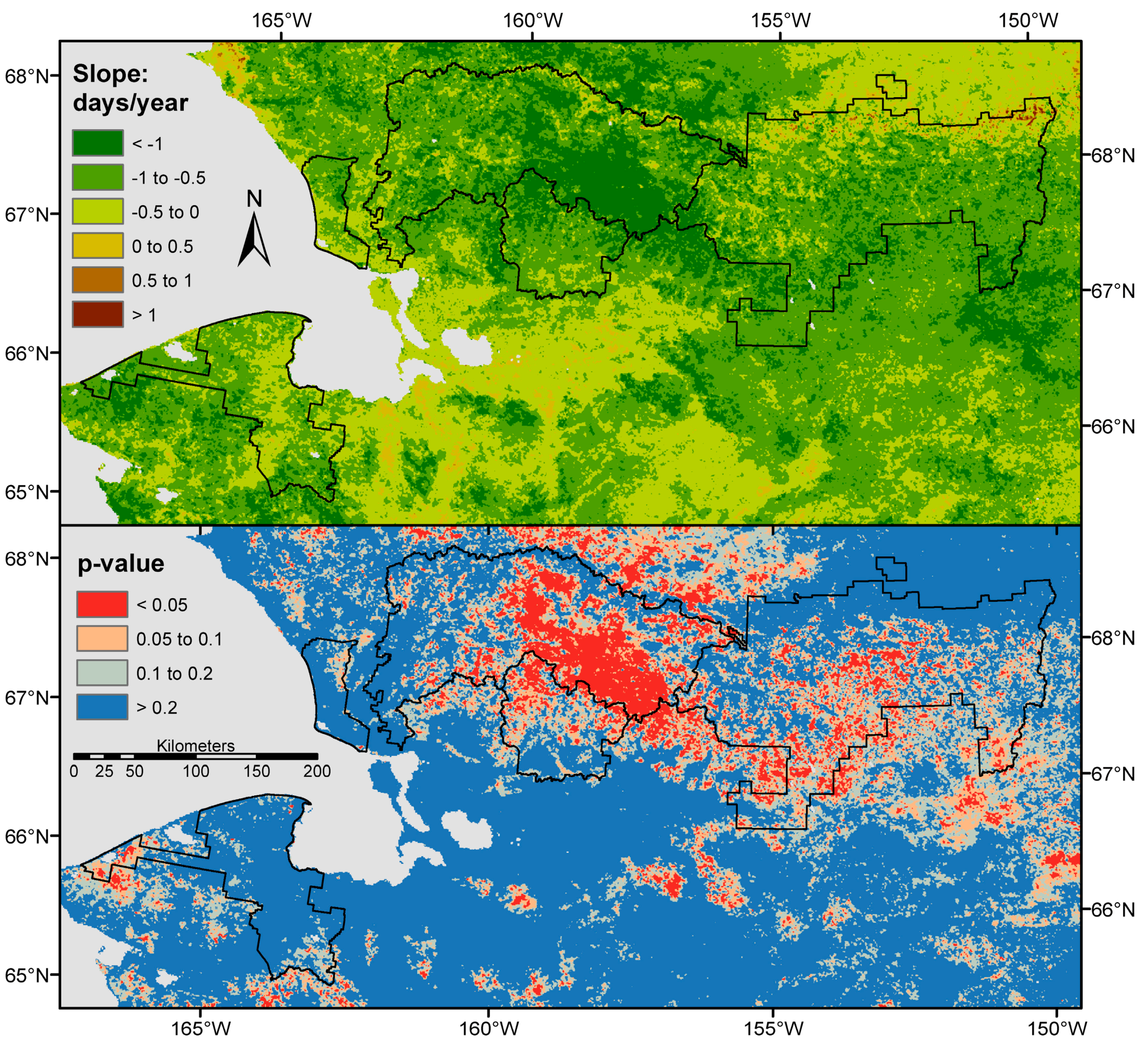
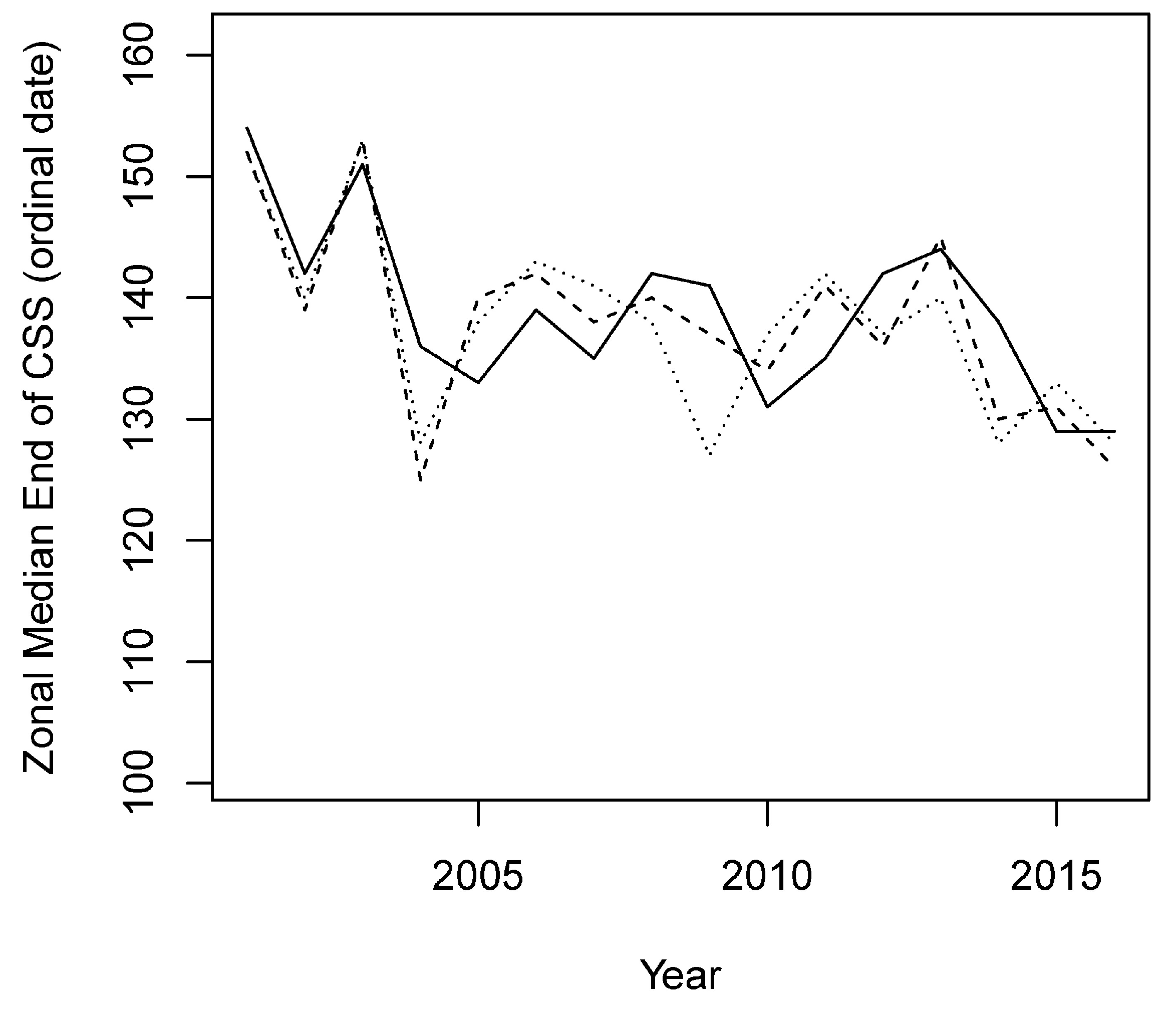
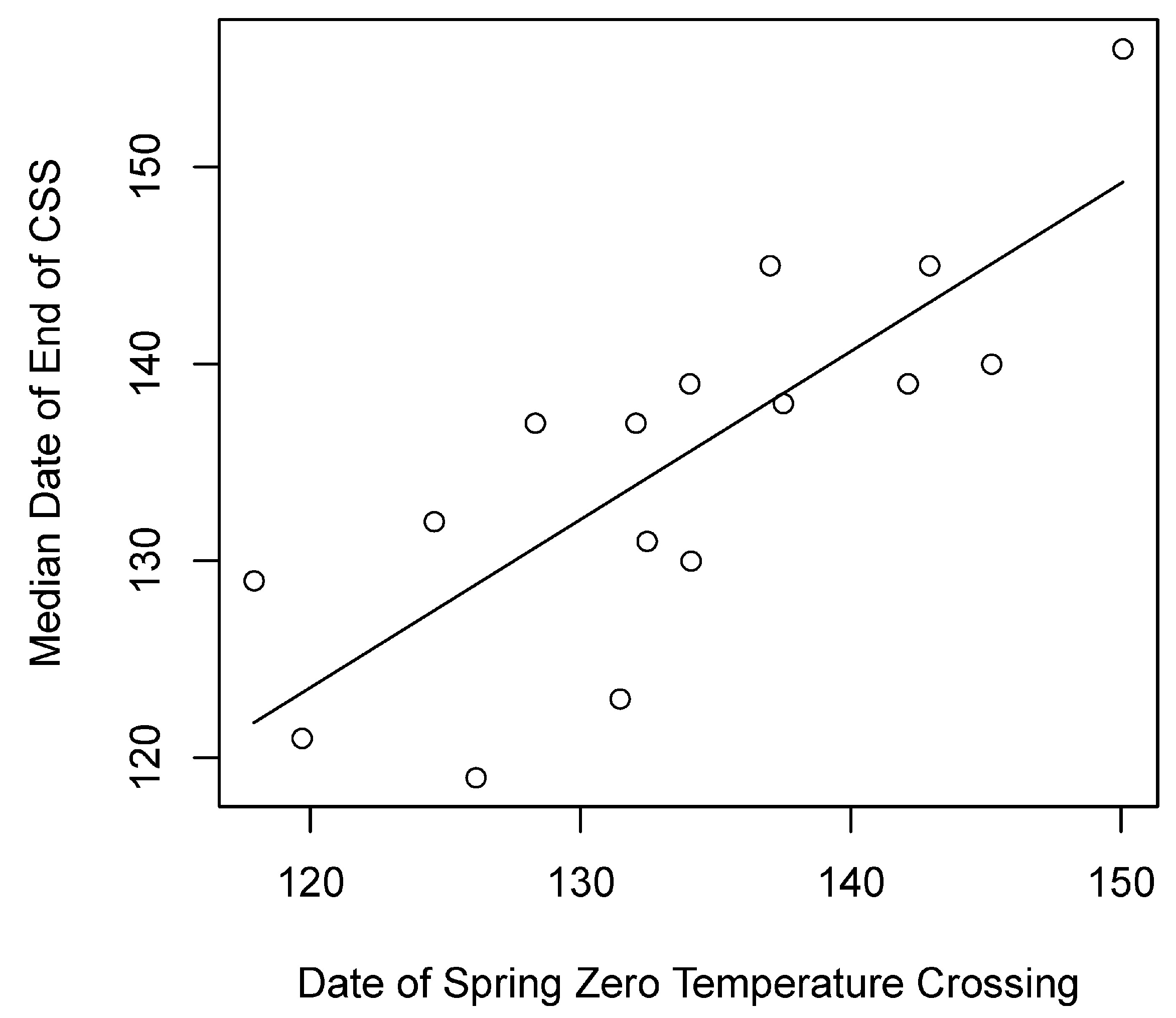


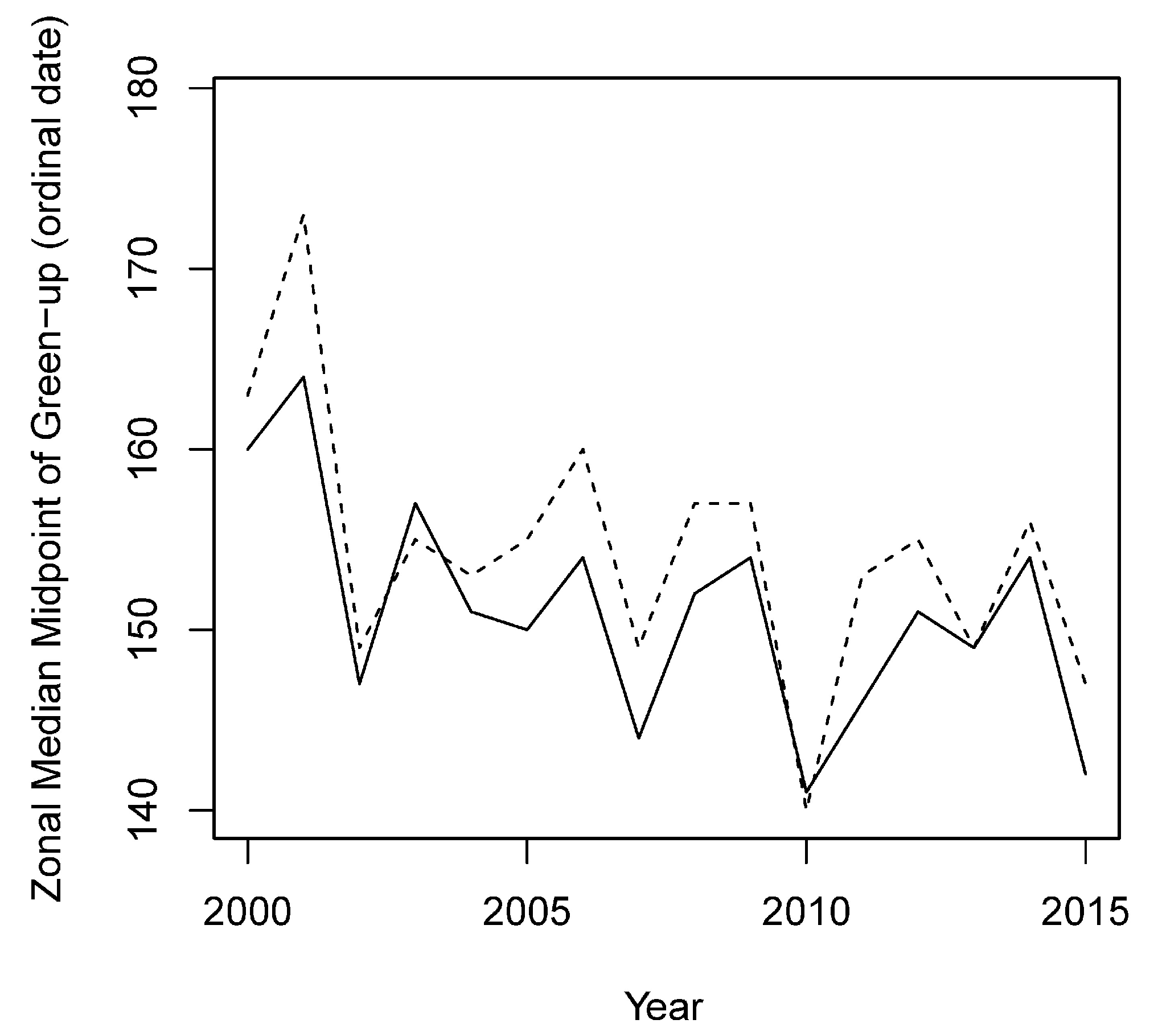
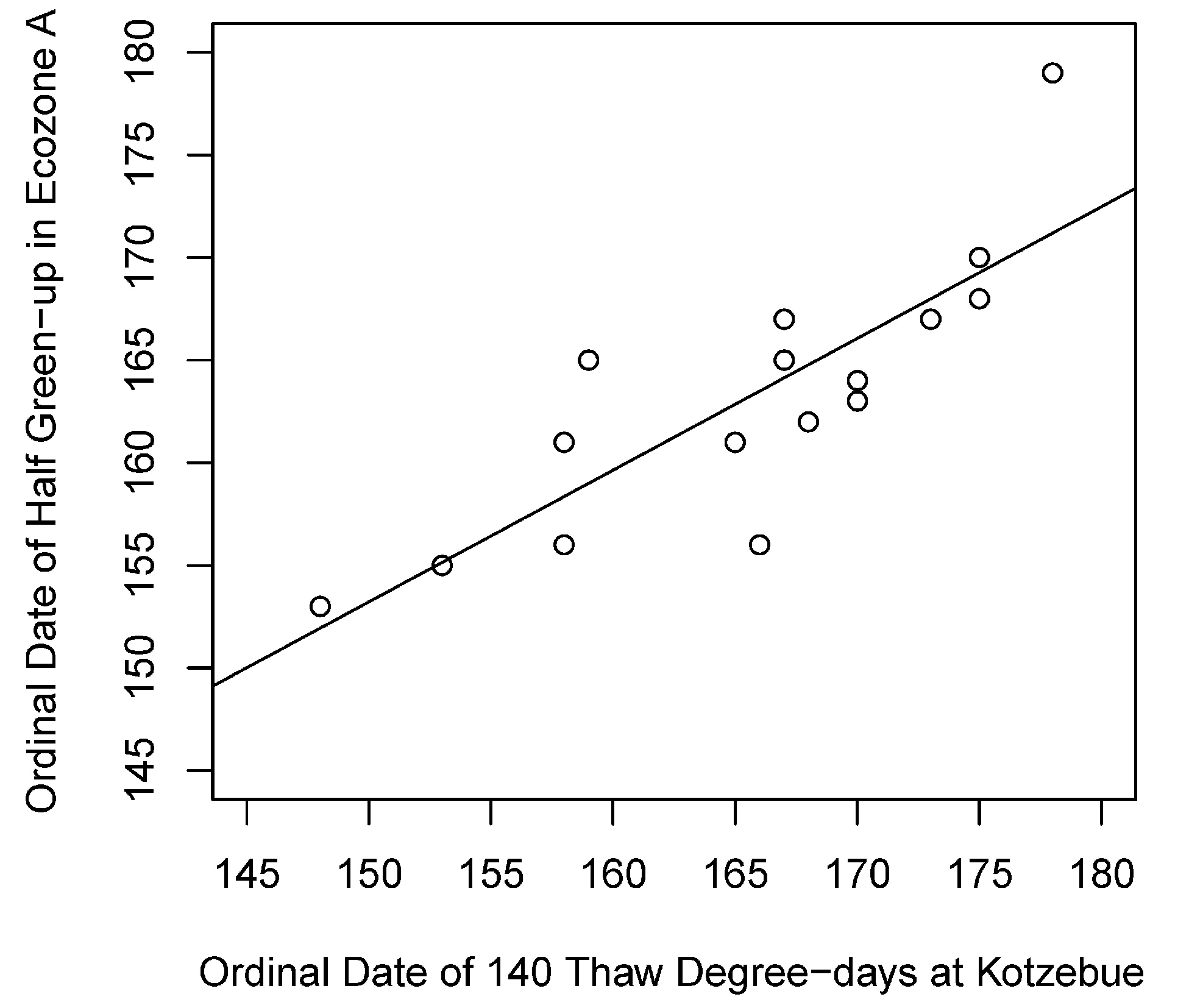

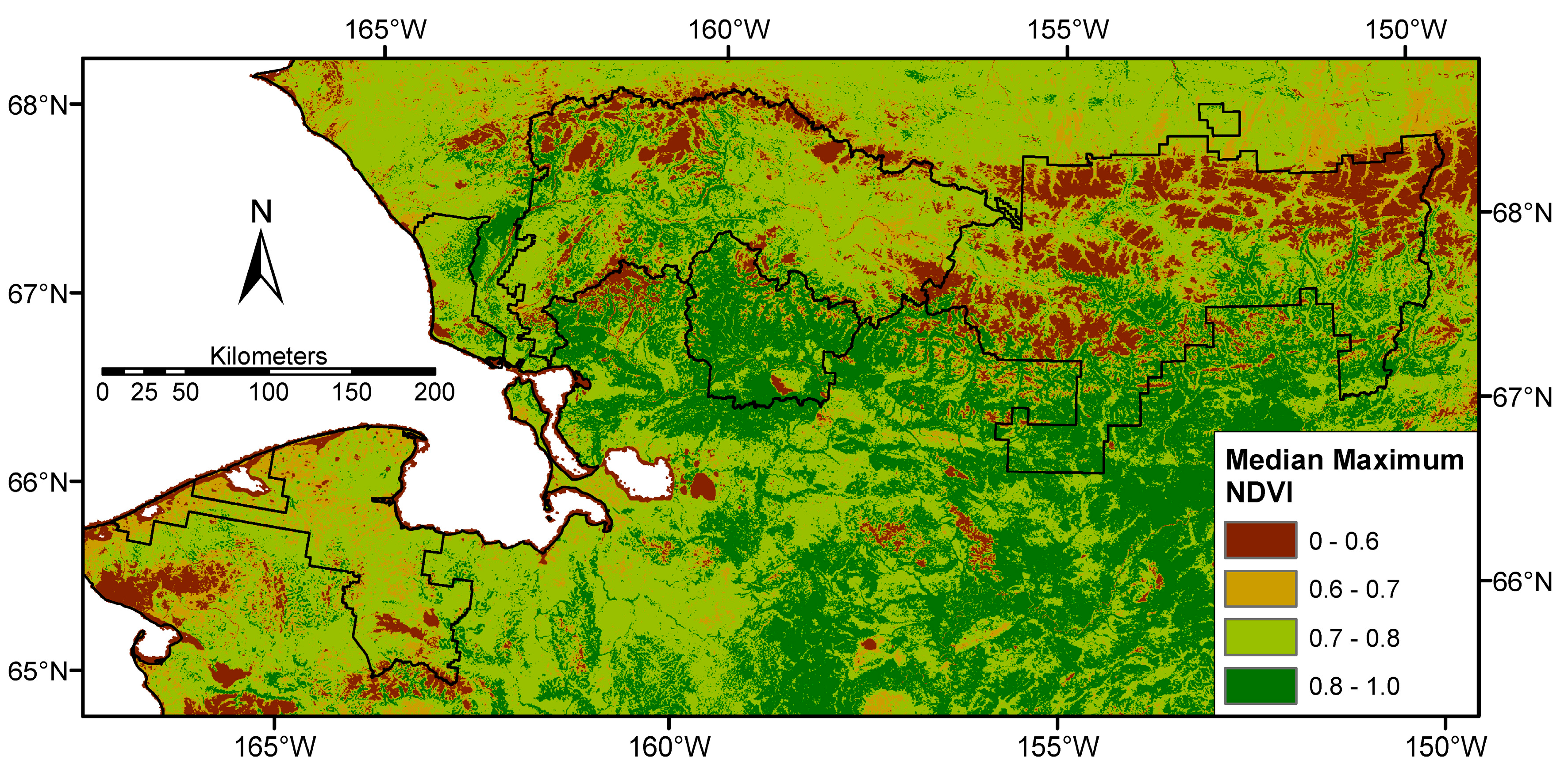
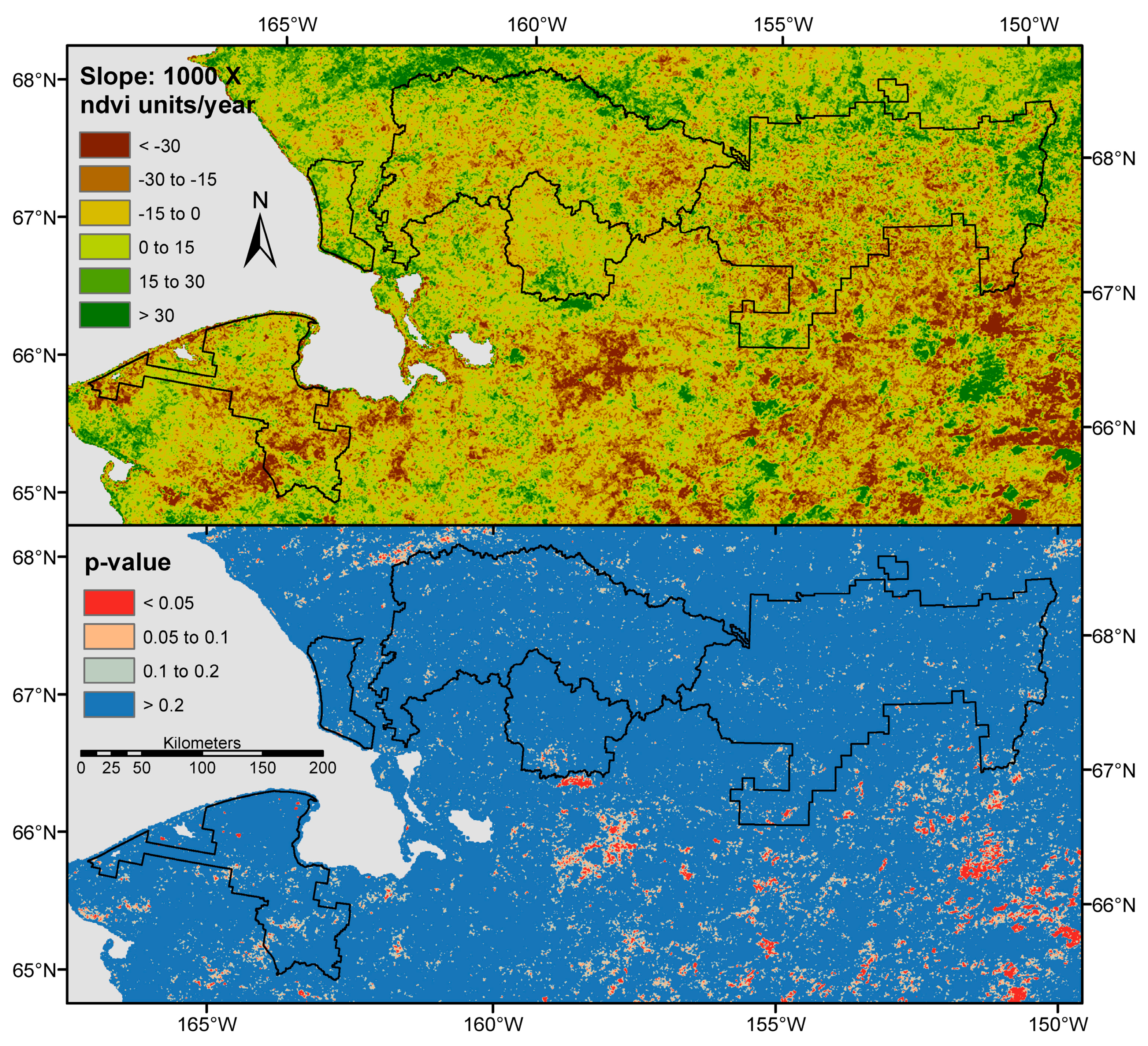
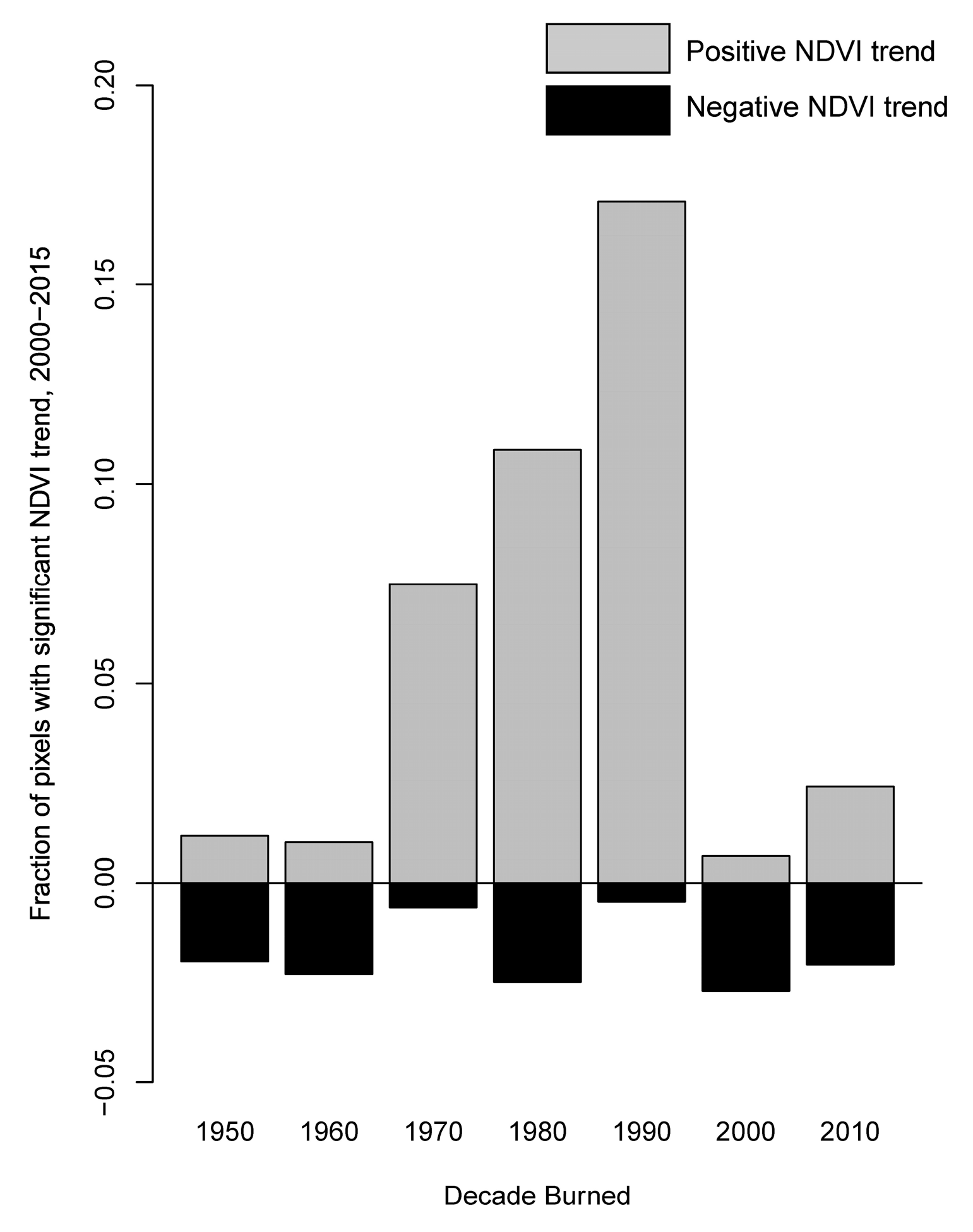
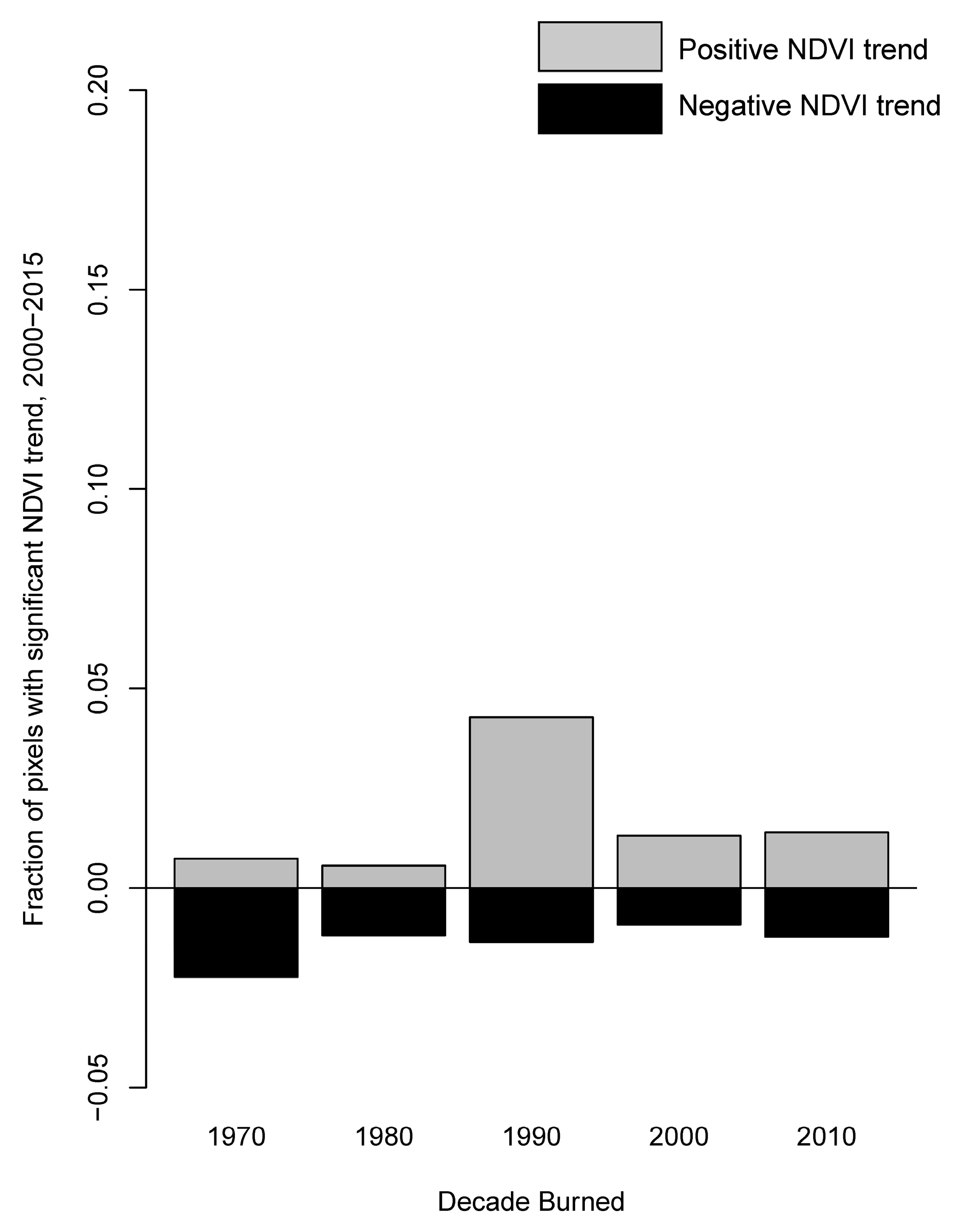

© 2017 by the author. Licensee MDPI, Basel, Switzerland. This article is an open access article distributed under the terms and conditions of the Creative Commons Attribution (CC BY) license (http://creativecommons.org/licenses/by/4.0/).
Share and Cite
Swanson, D.K. Trends in Greenness and Snow Cover in Alaska’s Arctic National Parks, 2000–2016. Remote Sens. 2017, 9, 514. https://doi.org/10.3390/rs9060514
Swanson DK. Trends in Greenness and Snow Cover in Alaska’s Arctic National Parks, 2000–2016. Remote Sensing. 2017; 9(6):514. https://doi.org/10.3390/rs9060514
Chicago/Turabian StyleSwanson, David K. 2017. "Trends in Greenness and Snow Cover in Alaska’s Arctic National Parks, 2000–2016" Remote Sensing 9, no. 6: 514. https://doi.org/10.3390/rs9060514





